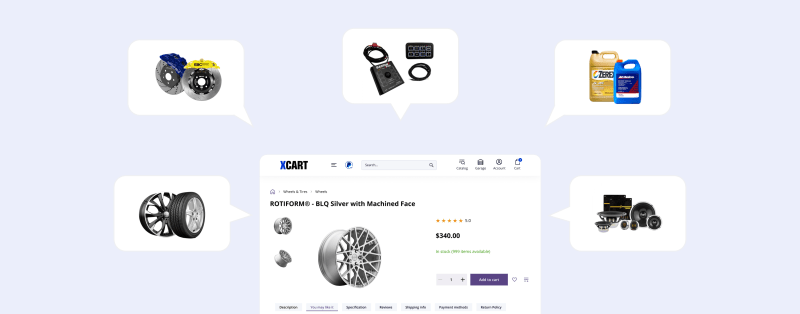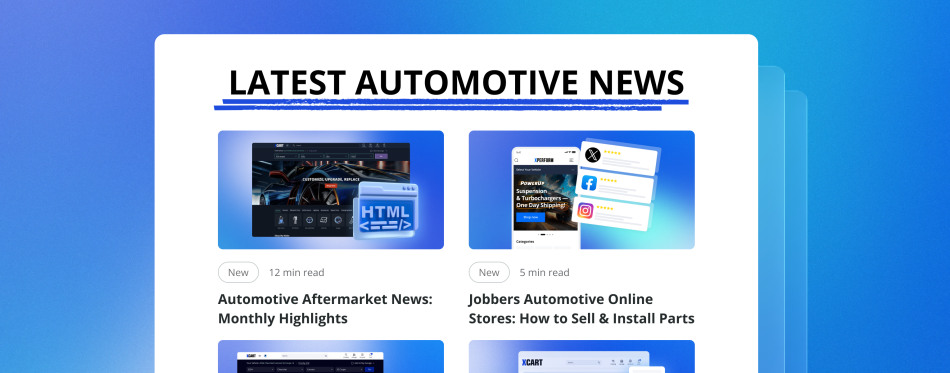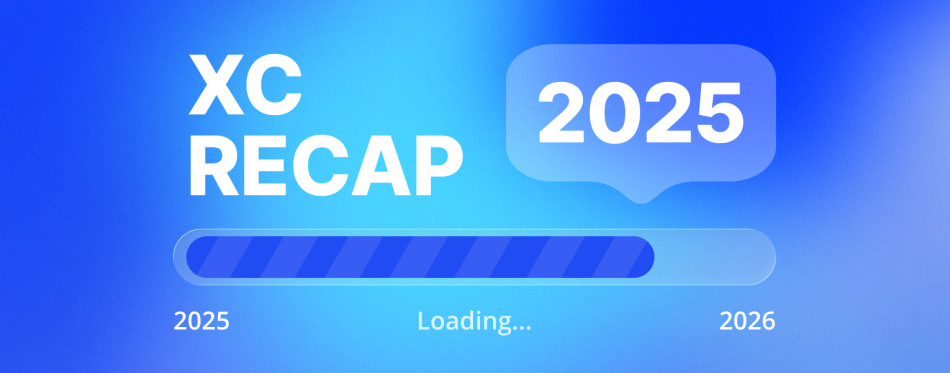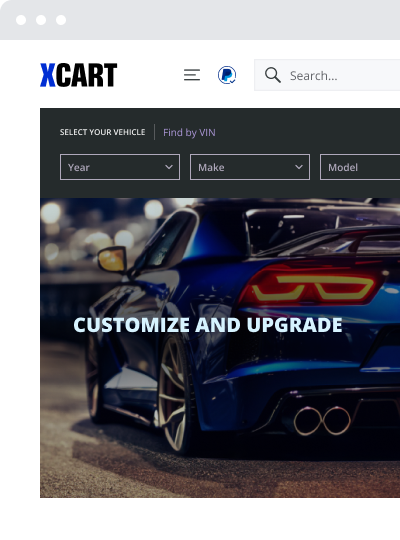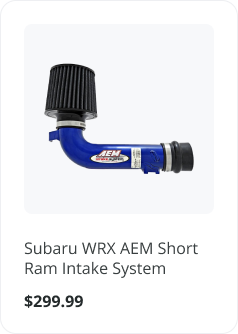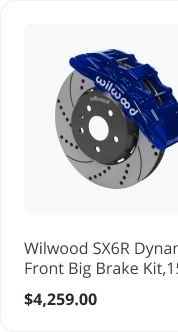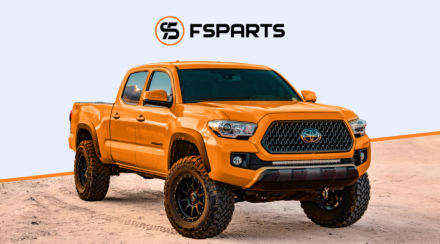5 Proven Automotive Parts Pricing Strategies for eCommerce Sellers in 2025
Getting automotive parts pricing wrong means losing sales to competitors or leaving money on the table. Getting it right, on the other hand, means profitability and a sustainable online business. The 2025 market brings challenges like new tariffs increasing import costs, complex vehicle technology demanding accurate listings and specialized parts, and the intense competition of the digital marketplace. So, it’s the right time to audit your offerings and adjust.
At X-Cart, we’ve seen five proven parts pricing strategies for automotive eCommerce sellers. Read on and learn how to build a winning approach!
Proven Pricing Strategy #1: Cost-Plus
Cost-plus pricing is often the starting point. It involves calculating your total cost to acquire a part (including sourcing, shipping, warehousing) and adding a markup percentage or fixed amount to set the selling price.
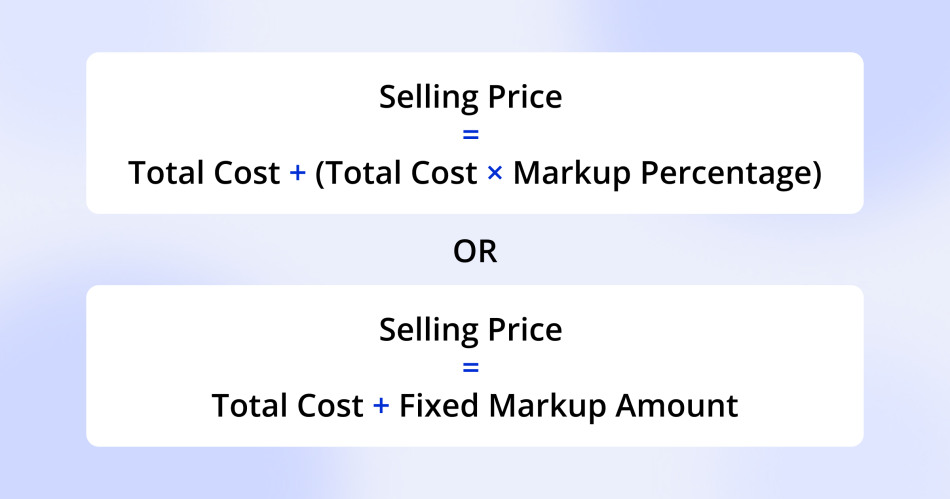
Total Cost includes the part acquisition cost, direct labor (like warehousing and packing), and allocated overhead (website maintenance, marketing spend). Its main advantage is simplicity. It ensures you cover your expenses and achieve a basic profit on each sale.
However, cost-plus ignores crucial external factors like a competitor’s price online, market demand, and perceived value. You risk setting your pricing too high compared to other online sellers, or too low, sacrificing potential profit. It doesn’t adapt to the rapid shifts common in eCommerce.
Cost-Plus Pricing Example
Pricing an oil filter for your online store:
- Acquisition & inbound shipping cost: $3.00
- Warehousing/Packing labor: $0.50
- Allocated overhead (per unit): $1.00
- Total Cost: $4.50
- Desired Markup: 60%
- Markup Amount: $4.50 × 0.60 = $2.70
- Selling Price: $4.50 + $2.70 = $7.20
Yes, it’s essential for setting a minimum price, but cost-plus is just a foundation for online sellers. The online auto parts market is very transparent and competitive. Competitors using market-based or dynamic pricing adjust instantly. If you rely solely on cost-plus, you are vulnerable. So, it’s best to use it to know your baseline, then add some market intelligence.
Proven Pricing Strategy #2: Market-Based
Market-based (or competitive) pricing sets your prices based on what other online sellers are charging for similar auto parts. You need to actively monitor competitors: other direct sellers, large platforms like Amazon or eBay, and dealership sites. It’s much easier with automated pricing intelligence tools like X-Cart’s automated pricing updates.
This strategy keeps you competitive, especially for price-sensitive commodity parts. You can react to market conditions and competitor moves, strategically price slightly below, match, or price above competitors (signaling higher durability or better service/shipping) to influence sales.
However, simply chasing the lowest price often leads to price wars that hurt everyone’s margins. If you only match low prices, you might undervalue your unique selling points (like better fitment data or faster shipping).
If you’re not using pricing automation, you’re competing against bots that never sleep.
Market-Based Pricing Example
Let’s say you need to price aftermarket brakes for a popular car like a Honda Civic on your website. You research prices on Amazon and independent seller sites. You find prices ranging from $25 to $80. You might price your preferred mid-brand at $45. This is competitive but not the absolute cheapest, reflecting your confidence in the part and your store’s reliability.
As you can see, effective market pricing online requires granularity. Competition varies hugely by part type. You need specific data for comparable parts from relevant online competitors to segment your inventory and decide which online competitors are the benchmark for each part category.
Proven Pricing Strategy #3: Value-Based
Value-based pricing sets a price based on the perceived value a part delivers to the customer, not just your expenses or a competitor’s price. Here, you focus on the benefits and solutions the part provides. That’s why you need to understand your target online customer and what exactly they value.
It works best for differentiated parts: unique features, superior quality, strong brand reputation, or clear ROI (like performance gains). Your website copy, product images, and branding must communicate this value to justify a potentially higher price of the deal.
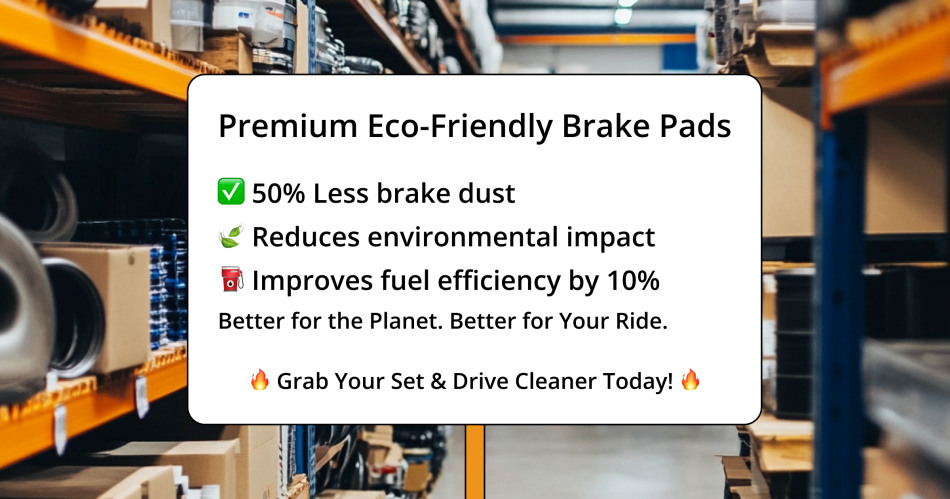
Value-based pricing often yields higher profit margins because price is tied to customer benefit (which can exceed cost). It differentiates your store from price-focused competitors and builds brand loyalty among customers seeking specific outcomes.
However, quantifying perceived value is tricky and needs research. It’s less suitable for highly commoditized parts where price is the main driver. You’ll be successful if you have strong online marketing to articulate the value proposition.
Value-Based Pricing Example
The rise of complex vehicles (EVs, ADAS) creates opportunities for online sellers using value-based pricing. Customers value parts that promise higher safety system function, better interior, or optimized EV range. For example, selling an OEM windshield glass online for an ADAS-equipped car can be priced higher if you emphasize its importance for safety system calibration and reliability in the product description.
Some other examples are:
- Listing high-performance engine parts (like a camshaft or piston set) with detailed descriptions of horsepower gains or efficiency improvements. Target enthusiasts willing to pay for performance.
- Selling premium tire brands online, emphasizing safety ratings (wet grip or stopping distance) and tread life guarantees in product details. Customers pay more for safety and durability.
- Offering parts for electric vehicles (EVs) or made from recycled materials, and mentioning environmental benefits or better EV performance in your listings.
- Bundling truck parts with extended warranties or installation guides to add value through reduced risk or convenience.
Proven Pricing Strategy #4: Parts Pricing Matrix
While often associated with maintenance and repair shops, the concept of a parts pricing matrix (or structured markup) is valuable for eCommerce sellers with large catalogs. Instead of one flat markup, you apply different markup multipliers based on the part’s cost. Typically, lower-cost parts get higher multipliers, and higher-cost parts get lower ones.
The logic is practical: a 3x markup on a $5 clip is reasonable ($15 selling price), but a 3x markup on a $300 alternator ($900 selling price) might be uncompetitive online. A matrix helps achieve a healthy gross profit margin across your whole online inventory. You ensure profitability on low-cost and high-volume items and keep a price on expensive parts market-reasonable at the same time.
For online sellers, a matrix gives a way to price thousands of SKUs and protect margins on small items often sold online. You can implement it through spreadsheet rules or integrate it into eCommerce platforms like X-Cart.
Parts Pricing Matrix Example
| Part Cost Range | Markup Multiplier | Approx. Gross Profit % | Selling Price Example (Mid-Range Cost) |
| $0 – $10 | x 3.00 – 4.00 | ~67-75% | ($7 part → $21 – $28) |
| $10.01 – $100 | x 2.50 – 2.75 | ~60-64% | ($60 part → $150 – $165) |
| $100.01 – $500 | x 1.85 – 2.20 | ~46-55% | ($300 part → $555 – $660) |
| $500.01+ | x 1.70 | ~41% | ($600 part → $1020) |
These are simple ways to apply the matrix online:
- A $0.50 fastener might sell for $2.00 (4x markup).
- A $7 oil filter might sell for $21.00 (3x markup).
- A $150 alternator might sell for $300.00 (2.0x markup).
- Expensive items (e.g., $4,000 engine) might have a fixed lower margin or be priced based on MSRP to remain competitive online.
You might exclude highly competitive items like basic oil filters or common tires from the main matrix or create different matrices for specific part categories (e.g., performance vs. standard) or customer types (B2C vs. B2B). Plus, don’t forget to check and adjust the matrix based on sales data and competitor pricing every once in a while.
Proven Pricing Strategy #5: Dynamic Pricing
Dynamic pricing uses algorithms to adjust your online price in real-time based on demand, competitor price, inventory levels, seasonality, website traffic, and customer search behavior. Basically, it’s the best way to manage pricing for eCommerce.
Online platforms like X-Cart allow instant and easy price changes, and the digital world gives the data for the algorithms. For online auto parts sellers, dynamic pricing can maximize revenue, optimize inventory turnover, and maintain competitiveness.
Benefits include maximizing revenue by finding the optimal price point and managing inventory by adjusting the price based on stock levels and demand. You can even enable personalized pricing or promotions.
But, it might need some investment in technology and data. There’s also a risk of customer backlash if price changes seem unfair, damaging your brand’s price image. So, try to avoid aggressive adjustments that can trigger price wars. Algorithms need rich and accurate data and strategic oversight to prevent irrational pricing.
Dynamic Pricing Example
Simply turning on dynamic pricing software isn’t enough. You need to define your goals (profit maximization vs. market share ) and set rules (min/max price, change frequency). Dynamic pricing works best when integrated with your business strategy and with human oversight to maintain brand consistency and customer trust.
Here are some rules you can try for dynamic pricing:
- Automatically increasing the price of washer fluid or tire chains on your site during winter.
- Adjusting the price of a popular tire model throughout the day based on competitor price scrapes and your own inventory levels.
- Raising the price of a rare bare engine block for a classic truck as online search volume increases and your stock dwindles.
Navigating Key Pricing Factors for eCommerce Sellers in 2025
Beyond core strategies, you need to track several forces that shape online parts pricing.
The Tech Effect
Modern vehicles are complex, which impacts online parts sales:
- Demand for EV parts (batteries, chargers, electric motors, modules) is surging. They often have higher costs. Diversifying your online catalog for hybrid and EV models is a good idea.
- ADAS and sensors are also in demand. ADAS features mean repairs involving sensors (in windshields, bumpers, lights) often need calibration after part replacement. As an online seller, you don’t perform calibration, but you must provide accurate part information. You can justify selling high-quality or OEM parts online by emphasizing their importance for proper ADAS function and calibration success in your product descriptions. This way, you can support a value-based pricing strategy for these critical parts.
Such complexity means you need highly accurate automotive catalog data, including precise fitment information and details about compatibility with technologies like ADAS. Misinformation leads to costly returns and customer dissatisfaction.
eCommerce Essentials
Success in online auto parts sales goes beyond listing products. The good news is that your own automotive eCommerce store gives you control over pricing, branding, and customer experience, unlike marketplaces (Amazon, eBay Motors). You avoid hefty commissions and commonly get higher margins. So, you can set tiered prices, B2B discounts, and targeted promotions freely.
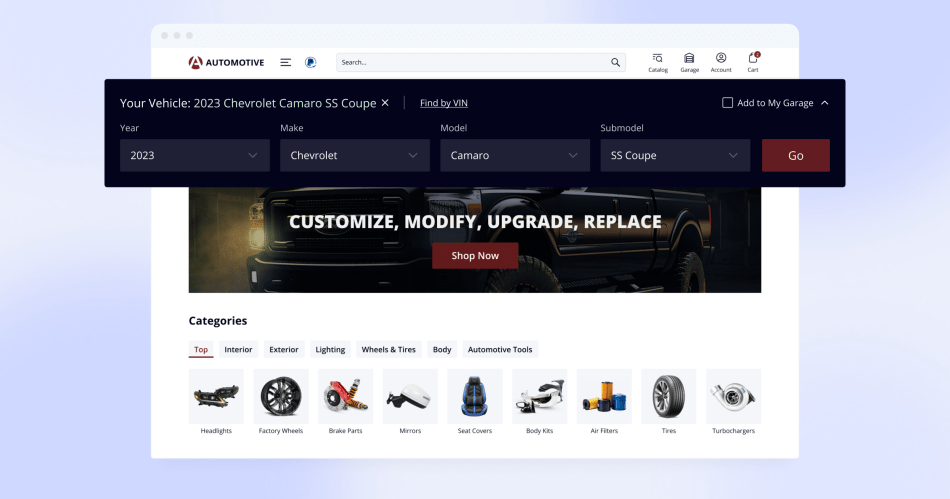
Together with an optimal price, these features will be handy to lead your potential customers right to the order button:
- Search & fitment help customers find and select the correct fit for their vehicle (Year/Make/Model/Engine/Trim), and they are non-negotiable online.
- Mastering shipping costs. Fulfillment is a major challenge, too, especially for bulky items (engine blocks, body panels like door panels or fenders, tires). Profitability depends on managing shipping costs. You can use dynamic weight-based shipping rules, regional auto parts fulfillment, or carrier rate shopping integrated into your platform.
The ease of online price comparison and the high cost of returns call for a sophisticated online strategy. Accurate data, competitive pricing (potentially dynamic ), and optimized shipping are all the things you need. Luckily, an auto direct-to-consumer channel offers the most control for these purposes.
The Tariff Tightrope
New 2025 tariffs (10-25% on imports from key regions like China) directly impact online sellers. Tariffs increase your Cost of Goods Sold (COGS) for imported parts like engine components or electrical parts. A 10% tariff can add a 3% cost increase even on a $25 item.
That’s why you need to decide whether to absorb these costs (reducing margins), pass them to customers via a higher online price (risking sales), or find alternative suppliers. Simply applying a cost-plus markup will inflate your online price and make you uncompetitive.
OEM vs. Aftermarket
If you offer both Original Equipment Manufacturer (OEM) and aftermarket replacement parts online, you need to pay even more attention to careful pricing and communication.
| Feature | OEM (Original Equipment Manufacturer) Parts | Aftermarket Parts |
| Source | Design is by or for the vehicle manufacturer (e.g., Ford, Toyota) | Made by independent companies |
| Price | Generally higher; can cost 60% or more than the aftermarket | Generally lower, prices vary by brand |
| Quality | Consistent, identical to factory parts | Variable; some lower, some equal, some superior |
| Availability | Usually only through authorized dealerships (but online sellers can source) | Available from automotive distributors for online sale |
| Selection | Typically only one option for a part number | Wide variety of brands and designs/materials |
| Warranty | Usually comes with a manufacturer’s warranty (e.g., 12 months) | Often no warranty, or limited warranty; varies by brand |
Take a look at the illustrative costs:
- Quarter glass (Ford F-150 2024): Costs vary ($250-$1500+) based on ADAS features, plus calibration ($150-$300+). Aftermarket door glass might be ~$190, OEM likely pricier, especially for ADAS compatibility.
- Brake pads (Toyota Camry 2024): Aftermarket pads $20-$100+. OEM pads $25-$150, depending on standard/economy line.
- Water pump (Ford F-150 2024): Aftermarket ~$135-$162. New OEM online listings vary ($40-$300+). Installed cost estimates ($759-$907) suggest shops use higher-priced parts.
- Door panel (Toyota Camry 2024): Used OEM ~$136. New OEM MSRP $375-$700+, discounted online maybe $250-$475+.
- Starter (Ford F-150 2024): Aftermarket ~$68-$260+. Used OEM ~$125. New OEM $300+.
- Tires (Toyota Camry 2024): Aftermarket $80-$250+ per tire. OEM often premium brands, $400+ for one, though downstream versions might be cheaper.
It’s best to decide your sourcing strategy as early as possible. Do you focus on lower-price aftermarket, premium OEM, or a mix? Your product listings must clearly differentiate between original parts and aftermarket, explaining differences and warranty information. Pricing should reflect these differences, too.
Some aftermarket brands may even offer superior quality to OEM and present a strong value proposition. The price gap between OEM and some aftermarket parts has narrowed for certain items as OEMs compete more aggressively.
Building Your Winning eCommerce Pricing Strategy for 2025
It’s clear that no single strategy fits all online auto parts businesses and situations. The best approach blends methods that match your catalog and customer base:
- Use cost-plus to set your price floor.
- Use market-based pricing, informed by online competitor monitoring, for visibility.
- Take advantage of value-based pricing for unique, high-tech, or premium-branded parts by highlighting benefits in your listings.
- Apply structured markups (matrix) to manage margins across a large and diverse online catalog.
- Implement dynamic pricing if you have the data and technology to optimize revenue and inventory in real-time.
Driving Your Online Profits Forward
Finally, being transparent on your website is what makes a trustworthy shop. Clearly display the price, explain shipping costs, and provide detailed product information (including fitment and part type). Justify higher numbers by highlighting value (quality, warranty, unique features) in your product descriptions so customers know why they click ‘Buy’.
Data is one of the most important drivers of online success, too. It’s best to invest in tools and processes to analyze competitor price, customer search and purchase behavior, your own costs (including shipping), inventory turnover, and market trends. You can turn to pricing software, analytics services, or automotive eCommerce platforms like X-Cart to manage pricing!
Need to integrate an automated pricing strategy for your auto parts store?
FAQs
What is parts matrix pricing?
Parts matrix pricing is a strategy-based formula for pricing auto parts. Instead of using a single, flat markup percentage for every part, a matrix uses a sliding scale. This means that lower-cost parts are marked up by a higher percentage, and higher-cost parts have a lower markup percentage.
The goal is to achieve a targeted overall gross profit margin for the business and keep prices competitive for customers at the same time.
How much do I mark up parts?
The markup on a part is the percentage by which you increase the part’s cost to determine the selling price. The exact markup percentage can vary based on the part’s cost, your business’s financial goals, and market competition.
For example, a low-cost part that you purchase for a few dollars might have a very high markup (e.g., 200-400% or more), but a very expensive part might have a much smaller markup (e.g., 15-20%).
The idea is that customers are less likely to question a high markup on a small-ticket item, but a flat 100% markup on a $2,000 part would be prohibitive.
What is a good profit margin for auto parts?
A good profit margin for auto parts is typically between 20% to 30%. This profit margin allows a business to cover its costs and ensure a healthy profit.
It’s important to distinguish between markup and margin:
- Markup is the percentage added to the cost of an item to get the selling price.
- Profit margin is the percentage of the selling price that is profit.
For example, a 50% markup on a $100 part means you sell it for $150. Your profit is $50, and your profit margin is 33% ($50 profit divided by $150 selling price).
About the author

